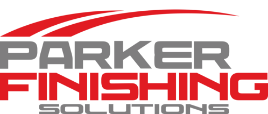Paint booths can pose significant risks for both people and the local environment if not handled correctly. Their highly flammable nature necessitates extreme caution when installing and operating exhaust walls. Your understanding and adherence to safety measures are paramount in minimizing the risk of harm and damage.
What Are Exhaust Walls in Paint Booths
Exhaust walls in paint booths play a pivotal role. They extract airborne overspray particles and release filtered air into the work environment. These walls are not just beneficial; they are essential. They help you reduce and eliminate toxic fumes, vapors, and dust in the lower area, ensuring a safe working environment.
However, due to the paint’s flammable nature, safety precautions must be taken to eliminate any risk when installing and operating exhaust walls in paint booths.
Remove Anything Flammable
In the first instance, you need to remove anything that can be flammable or reduce the risk of fire starting. Anything that can provide a static charge needs to be covered. A fire extinguisher should be placed at all painting and paint removal locations, and anything that is saturated with paint needs to be disposed of in metal cans.
Good Housekeeping
High standards of housekeeping must be adhered to at all times. Your role in maintaining these standards is crucial, as it ensures that nothing is contaminating the area or increasing the risk of fire or harm to booth personnel. This not only ensures a safe environment but also contributes to optimal results.
Personal Safety
Each individual has a crucial role in maintaining safety. All employees should be equipped with single-use respirators and practice thorough handwashing before eating to avoid ingesting any paint or paint particles. Importantly, no food should be brought into the paint booth at any time. Additionally, everyone should be wearing full protective clothing at all times to prevent saturation with paint during the application or removal processes.




